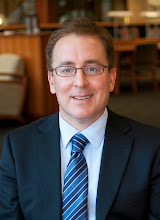Thursday, January 26, 2012
Occupy DC
On Tuesday, January 24, I testified at a congressional hearing on the Occupy DC protest in McPherson Square in the District of Columbia. I was invited by the committee on behalf of the democratic minority members, who wanted to have a First Amendment scholar address the importance of public protest in public places and the Park Service's enforcement of its regulations concerning public demonstrations. It was a really interesting experience and a very substantive discussion, for the most part, about the limits of public protest. You can watch the video here.
Tuesday, January 17, 2012
Rahm Emanuel and NATO/G-8 Militarization
It never fails. The G8 or some similar international summit comes to town and local officials invoke something akin to martial law. They call out massive officer brigades, engage in surveillance and covert acts, and cordon off public spaces where protest is permitted so that attendees can be kept safe from the rabble. Now came Mayor Rahm Emanuel, who proposed to do this and more during the NATO/G8 summit scheduled for May in Chicago. Here is how the Huffington Post described the Mayor's proposed ordinance, which some Occupy protesters have dubbed the "Sit Down and Shut Up" ordinance:
However, the proposal still calls for an increased number of surveillance cameras; closing of parks and beaches until 6 a.m.; parade restrictions and higher fees for parades and protests. The police supt. is also empowered to “deputize” out-of-state law enforcement personnel experienced in handling civil unrest. If the past is a reliable guide (and I'm betting it is), these and other measures will lead to substantial limits on public protest, many lawsuits, and settlement liability imposed on the City of Chicago.
This is not the 1968 DNC. It's too bad we have progressed so little in terms of how we often characterize, and how officials treat, lawful protest activity. Before the first parade has hit the streets, the Mayor is seeking emergency powers and police are preparing to do battle with boots on the ground. It's true that mass protests come with some threat to public safety. So do state fairs, holiday parades, and large conventions. But the act of public protest is not itself a threat. Chicago officials would do well to keep that in mind as they prepare for May.
In December, Emanuel announced that the fine for resisting a police officer would be doubled from its current range of $25 to $500 to $200 to $1,000. The mayor's ordinance also restricted the hours of public parks, playgrounds and beaches in accordance with the Chicago Park District's hours of operation. A second ordinance applying to the protests also, among other changes, requires organizers to provide a parade marshal of their own for every 100 demonstration participants.The oringinal proposal also limited the time periods for protest and the use of bullhorns. Today, in the face of protests from protesters and aldermen (among others), Emanuel backed off the increased fines provision. He had previously relented regarding some of the other resrtictions.
However, the proposal still calls for an increased number of surveillance cameras; closing of parks and beaches until 6 a.m.; parade restrictions and higher fees for parades and protests. The police supt. is also empowered to “deputize” out-of-state law enforcement personnel experienced in handling civil unrest. If the past is a reliable guide (and I'm betting it is), these and other measures will lead to substantial limits on public protest, many lawsuits, and settlement liability imposed on the City of Chicago.
This is not the 1968 DNC. It's too bad we have progressed so little in terms of how we often characterize, and how officials treat, lawful protest activity. Before the first parade has hit the streets, the Mayor is seeking emergency powers and police are preparing to do battle with boots on the ground. It's true that mass protests come with some threat to public safety. So do state fairs, holiday parades, and large conventions. But the act of public protest is not itself a threat. Chicago officials would do well to keep that in mind as they prepare for May.
The "Occupy _____" Moment/Movement
I've been working on a second book project, and not regularly posting here. I did a guest stint at Concurring Opinions in September and October, during which I posted several things about the "Occupy" protests. You can check those out here.
The Occupations have mostly been shut out of public parks and plazas. But protesters have found new places to occupy and contest, including the U.S. Capitol. Whatever the future of this moment of discontent, it is clear that the occupiers have moved income inequality to the fore of the national debate. And they did this by moving into and literally commandeering public spaces. I suspect that even in the digital era, this will not be the last protest movement to rely on the streets and parks to spark a national debate.
The Occupations have mostly been shut out of public parks and plazas. But protesters have found new places to occupy and contest, including the U.S. Capitol. Whatever the future of this moment of discontent, it is clear that the occupiers have moved income inequality to the fore of the national debate. And they did this by moving into and literally commandeering public spaces. I suspect that even in the digital era, this will not be the last protest movement to rely on the streets and parks to spark a national debate.
Subscribe to:
Posts (Atom)

